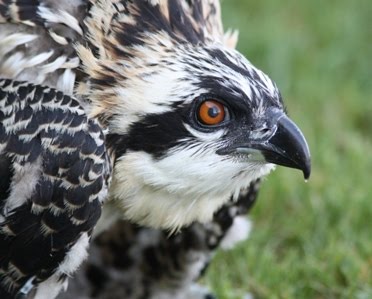I see that I never posted the data results here from 2021 so here they are….
2021 OSPREY RESEARCH AND PRODUCTION SUMMARY
By Vanessa Greene
The first Ospreys of the 2021 season were back on their nests on March 29! It was a good year for the Ospreys in this 38th year of monitoring the osprey population in the eight county Twin Cities metro area, with increased numbers and a higher success rate than last year. The early Ospreys laid the first eggs by April 19!
There were 170 nests which were occupied* by a pair of adult ospreys. (159 in 2020). There may be more nests we do not know about and we hope the public will continue to report new nests to us. Eggs were laid in 166 nests (144 in 2020) which is quite a high percentage of occupied nests. There were two additional nests that were discovered late in the season with no birds present which could not be included in the above counts without more information. There were 140 nests had at least one chick that was confirmed to have fledged successfully or survived to fledging age (116 in 2020). We documented 30 nests which failed (43 in 2020). We separate failed nests into two distinct subcategories; there were only 4 nests where a pair was present but no eggs were laid (15 last year) and 26 nests where eggs were laid but they failed to successfully fledge a single chick or the cause of failure was unknown (28 last year). (Not laying eggs is considered to be a kind of nest failure by other scientists.) Out of those 26 nests where eggs were laid, there were 10 nests where hatching did occur but all chicks died fairly early, before we could accurately count them. The remaining 16 nests failed prior to hatching. The 2021 failure rate dropped to 18%. This represents a very significant decrease! (In 2020 the failure rate was 27%, in 2019 it was 39%, in 2018 it was 29%, in 2017 it was 28%, and in 2016 it was 25%.)
There were 295 chicks that were known to have fledged successfully or survived to fledging age! (237 in 2020). Most successful nests had two chicks this year, with 65 nests with two chicks, 45 nests with three chicks, and 30 nests that produced a single chick. The mortality rate this year was quite a bit higher than last year with 26 chicks which were known to have died or disappeared before fledging, (8 last year) plus two chicks that disappeared right at fledging time, flying off never to be seen again. Sadly, three of these chicks became tangled in baling twine and suffered tragic, unnecessary deaths. There were three known adult mortalities. One was a male that was found injured below a nest on 7/13, was taken to The Raptor Center where he had to be euthanized. The other two were females that disappeared mid-season, leaving two males to care for chicks alone.
There were only 69 adult Ospreys identified by their bands, as the number of banded birds continues to drop. We were sad to document that there were 9 banded birds that did not return this year. Three of the returning banded ospreys were from Iowa.
We located 14 new nesting territories with a pair present and two additional nests found too late to know if the nest was occupied or active. Of these new nests, 10 of them successfully fledged chicks. There were two nests which were occupied by geese. It is interesting to note that of the 170 occupied territories this year, 80 were on osprey nesting platforms, 35 were on cell or radio towers, 31 were on ballfield lights, 22 were on a power pole or transmission tower, two were on other manmade structures and one nest was built in a tree.
The oldest male this year, was 18 years of age, with one that was 16 years of age, and six that were 15 years of age! ALL of these older males bred successfully! Our oldest female was 15 years old and she bred successfully. There were four females that were 14 years old. All but one of these older females bred successfully. (Sadly one 14-year-old female produced a chick that got its talon caught in the nestbox and died tragically.)
The overall productivity of occupied nests which were successful this year increased to 82%! (73% in 2020, 62% in 2019, 71% in 2018, 72% in 2017, 76% in 2016, 68% in 2015, 70% in 2014). The mean number of young fledged per successful nest was 2.11% (2.04% in 2020, 2.09% in 2019, 2.13 in 2018, 2.25 in 2017, 2.24 in 2016). The mean number of young fledged per active nest was 1.78%(1.65% in 2020,1.39% in 2019,1.64 in 2018, 1.75 in 2017,1.84 in 2016) and the mean number of young fledged per occupied nest was 1.74% (1.49% in 2020,1.28% in 2019, 1.51 in 2018, 1.62 in 2017, 1.70 in 2016, 1.65 in 2015). These numbers reflect a notable increase in overall productivity per nest. There was one nest which has failed to fledge a chick for 15 years which was successful this year! Another nest that had failed for six years in a row, fledged chicks this year! Two others that had failed for four years both produced chicks successfully.
It is interesting to note that we have recorded 2,999 chicks that fledged from monitored nests since the inception of this project.
-----------------------------------------------------------------------------------------
*Successful nests are those that were known to have fledged at least one chick successfully, activenests are those where eggs are laid and occupied nests are those where pairs are present at a nest site for a period of time, regardless of the time of year or whether or not they lay.

